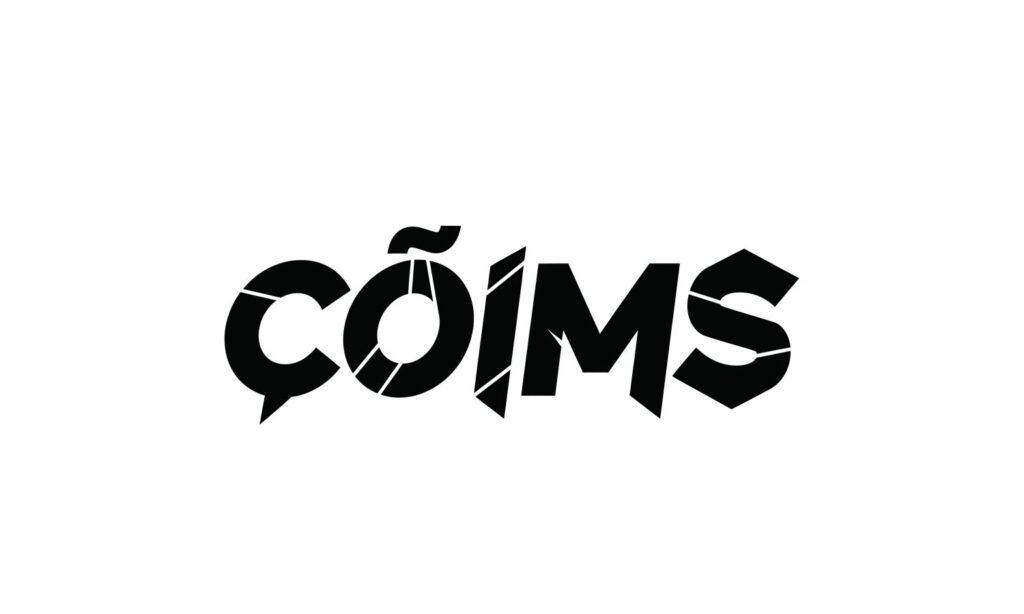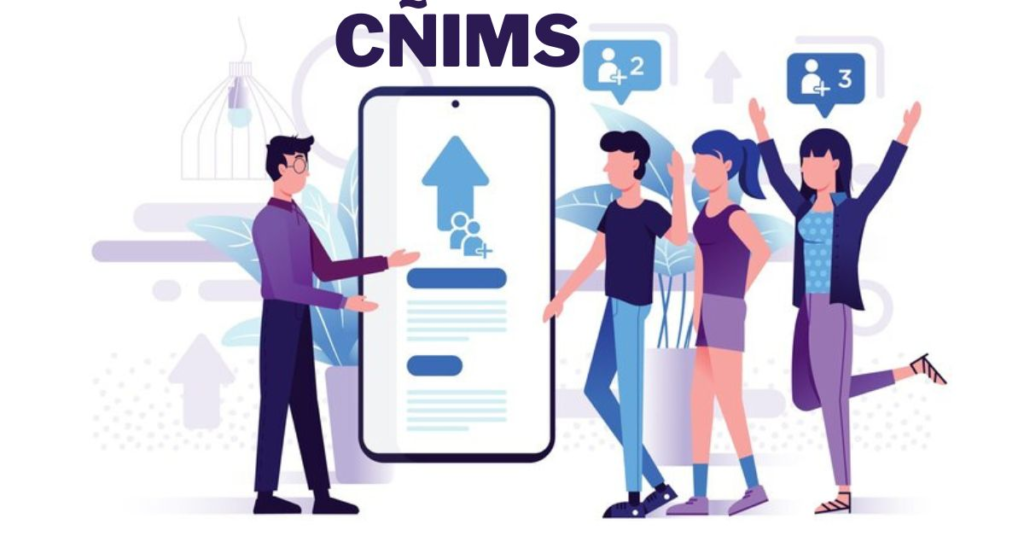Tech
CÑIMS: Decoding the Future of Business & Ancient Wisdom

- Share
- Tweet /home/u433845138/domains/newsmm.co.uk/public_html/wp-content/plugins/mvp-social-buttons/mvp-social-buttons.php on line 71
https://newsmm.co.uk/wp-content/uploads/2025/07/WhatsApp-Image-2025-06-24-at-16.23.33_0690d5c8-01-01-01-01-01-1000x600.jpg&description=CÑIMS: Decoding the Future of Business & Ancient Wisdom', 'pinterestShare', 'width=750,height=350'); return false;" title="Pin This Post">
In a world constantly evolving, driven by innovation and a rekindled appreciation for heritage, the term “CÑIMS” emerges with a fascinating duality. It represents both the cutting edge of technological advancement and a profound connection to human history and spirituality. This article will delve into these two distinct, yet equally compelling, interpretations of CÑIMS, exploring their intricacies, benefits, challenges, and future implications.
CÑIMS: The Technological Frontier Coordinated Networked Intelligent Management Systems
Imagine an organization operating with the seamless efficiency of a highly intelligent, interconnected organism. This is the vision behind Coordinated Networked Intelligent Management Systems (CÑIMS). Far beyond traditional enterprise software, CÑIMS represents a paradigm shift in how businesses manage their complex operations. At its heart, it’s an advanced, AI-driven operating system designed to orchestrate every facet of a business, from supply chains and customer interactions to financial flows and human resources.
The Inner Workings of a CÑIMS

A true CÑIMS isn’t just a collection of smart tools; it’s a unified ecosystem with several core components working in harmony:
- Dynamic Data Ingestion: The lifeblood of any intelligent system is data. CÑIMS excels at continuously ingesting vast quantities of information from a multitude of sources. This includes internal data from IoT sensors embedded in machinery, mobile applications used by employees and customers, traditional Enterprise Resource Planning (ERP) and Customer Relationship Management (CRM) systems, and even external data streams like satellite imagery, weather patterns, and social media trends. This constant flow of diverse data provides a comprehensive, real-time pulse of the organization and its environment.
- Machine Reasoning Core: This is the “brain” of the CÑIMS. Powered by advanced artificial intelligence, including machine learning and deep learning algorithms, this core processes and analyzes the ingested data. It identifies patterns, predicts trends, detects anomalies, and extracts actionable insights that would be impossible for humans to discern from raw data alone. It learns and adapts over time, constantly refining its understanding of the operational landscape.
- Distributed Intelligence Grid: Rather than a single monolithic AI, a CÑIMS often employs a network of specialized AI agents. Each agent might be responsible for a specific domain, such as optimizing logistics, personalizing customer experiences, or predicting equipment maintenance needs. These agents collaborate and communicate, sharing insights and coordinating their actions to achieve overarching organizational goals. This distributed approach enhances robustness, scalability, and efficiency.
- Autonomous Action Framework: One of the most transformative aspects of CÑIMS is its ability to execute decisions autonomously. Based on the insights generated by the machine reasoning core and the coordinated efforts of the intelligence grid, the system can initiate actions without direct human intervention. This could involve automatically rerouting supply chains in response to a disruption, adjusting energy consumption based on real-time pricing and demand, or even dynamically reallocating human resources to address sudden surges in workload.
- Human Oversight Interface: While autonomy is a key feature, human oversight remains crucial. CÑIMS provides intuitive interfaces that allow human operators and decision-makers to monitor the system’s performance, understand its reasoning, and intervene when necessary. This ensures transparency, accountability, and the ability to course-correct or inject human judgment into complex or sensitive situations. It’s a partnership between human ingenuity and artificial intelligence, amplifying human capabilities rather than replacing them entirely.
The Transformative Benefits of CÑIMS in Business

The implementation of a CÑIMS can bring about a profound transformation in how businesses operate, offering a significant competitive advantage:
- Enhanced Operational Efficiency: By automating routine tasks, optimizing processes, and predicting potential issues, CÑIMS dramatically reduces waste, errors, and manual effort. This leads to leaner operations and more efficient resource utilization.
- Superior Decision-Making: With real-time access to comprehensive data and AI-driven insights, leaders can make more informed, data-backed decisions faster than ever before. This agility is critical in today’s rapidly changing market.
- Increased Agility and Adaptability: CÑIMS allows businesses to respond swiftly to market shifts, unforeseen disruptions, and emerging opportunities. Its autonomous nature means it can adapt to new conditions in real-time, minimizing negative impacts and maximizing beneficial outcomes.
- Personalized Customer Experiences: By analyzing customer data at an unprecedented scale, CÑIMS can enable hyper-personalized interactions, proactive problem-solving, and tailored product or service offerings, leading to increased customer satisfaction and loyalty.
- Innovation and Competitive Edge: By freeing up human talent from mundane tasks and providing deep insights into market dynamics, CÑIMS empowers organizations to focus on innovation, develop new offerings, and stay ahead of the curve. It’s about working smarter, not just harder.
- Predictive Maintenance and Risk Mitigation: CÑIMS can predict equipment failures before they occur, allowing for proactive maintenance and minimizing costly downtime. It can also identify potential risks across the entire operation, from cybersecurity threats to supply chain vulnerabilities, enabling timely mitigation strategies.
Cñims: Echoes of Ancient Wisdom – Cultural and Spiritual Artifacts
Stepping away from the realm of technology, “Cñims” also resonates with a much older, deeper meaning, referring to objects imbued with profound cultural and spiritual significance. These “cñims” are not merely decorative items; they are tangible links to ancestral traditions, beliefs, and practices.
The Enduring Power of Cultural Cñims
Throughout history, diverse cultures have created artifacts that embody their worldview, values, and connection to the spiritual realm. These “cñims” serve multiple purposes:
- Rich in Meaning and History: Every cultural cñim tells a story. Its design, materials, and method of creation are often steeped in generations of tradition, reflecting the collective wisdom and experiences of a community. They are living archives of human ingenuity and belief.
- Tools for Spiritual Connection and Healing: In many traditions, cñims are considered conduits to spiritual energies. They might be used in rituals, ceremonies, or personal practices to foster a deeper connection to the divine, promote healing, or offer protection. The belief in their power is often rooted in centuries of communal experience and validated through anecdotal evidence passed down through families.
- Symbolism and Guidance: Often, the intricate patterns, colors, and forms of cultural cñims carry specific symbolic meanings. They might represent aspects of nature, deities, virtues, or stages of life. They can serve as visual affirmations, reminders of spiritual paths, or guides during times of challenge. They are not simply symbols of something, but rather, they are seen as embodiments of that something.
- Reflection of Artistry and Values: The craftsmanship involved in creating these cñims is often exquisite, reflecting the artistic sensibilities and meticulous attention to detail valued by the culture. The materials used, whether natural elements like herbs, flowers, crystals, or carved wood and woven fibers, are often chosen for their inherent properties and symbolic resonance. The act of creation itself can be a sacred process, imbued with intention and prayer.
- Fostering Unity and Identity: Cultural cñims play a vital role in community cohesion. They are often central to communal rituals and celebrations, reinforcing shared heritage, traditions, and a sense of collective identity. They act as anchors, connecting individuals to their past and to each other.
Incorporating Cultural Cñims for Well-being
While the technological CÑIMS aims to optimize external processes, cultural cñims focus on enriching our internal landscape. Integrating them into daily life can offer numerous benefits for personal well-being:
- Promoting Mental Clarity and Inner Peace: The presence of a cñim, especially one imbued with personal meaning, can serve as a focal point for meditation or quiet contemplation. Its beauty and symbolism can help calm the mind, reduce mental clutter, and foster a sense of tranquility.
- Alleviating Stress and Anxiety: Engaging with a cñim, whether by holding it, meditating upon it, or simply having it in your personal space, can be a grounding practice. This can help to alleviate feelings of stress and anxiety by bringing focus to the present moment and connecting to a sense of calm and purpose.
- Enhancing Mindfulness Practices: Cñims can act as tangible reminders to be present and aware. Placing a cñim on a desk or bedside table can prompt moments of mindfulness throughout the day, encouraging pauses for reflection and gratitude.
- Setting Intentions and Affirmations: Many people use cñims as tools for setting intentions. Holding a cñim while visualizing a goal or repeating an affirmation can amplify the intention, helping to manifest desires and cultivate a positive mindset.
The Convergence and Divergence of CÑIMS
It’s clear that the two interpretations of “CÑIMS” exist in vastly different domains. One is a product of human innovation in the digital age, focused on efficiency and control. The other is a product of human spiritual and cultural evolution, focused on meaning, connection, and well-being.
However, there’s a subtle, underlying connection. Both strive for a form of optimization: one for external processes and the other for internal harmony. Both are about understanding and managing complex systems – whether they are business operations or the human psyche. As our technological capabilities grow, perhaps there will be an increased appreciation for how technology can support our well-being and cultural heritage, rather than detract from it. The ethical considerations of AI, for example, often touch upon the very human values that cultural cñims represent.
The Road Ahead: Challenges and Future Prospects
For Technological CÑIMS:
- Data Quality and Quantity: The effectiveness of a technological CÑIMS hinges on vast amounts of high-quality, unbiased data. Ensuring data integrity and overcoming data silos remain significant challenges.
- Ethical AI and Trust: As CÑIMS makes autonomous decisions, questions of accountability, bias in algorithms, and transparency become paramount. Building trust in these systems is crucial for widespread adoption.
- Integration Complexity: Integrating a comprehensive CÑIMS with existing legacy systems can be a massive undertaking, requiring significant investment and technical expertise.
- Human-AI Collaboration: The future lies in effective human-AI collaboration. Designing systems that augment human capabilities rather than simply replacing them will be key to unlocking their full potential.
Despite these challenges, the future of technological CÑIMS is incredibly promising. We can expect:
- Hyper-personalization: Even more sophisticated customer experiences and tailored services.
- Predictive Operations: Near-perfect foresight in supply chain management, maintenance, and resource allocation.
- Resilient Businesses: Organizations that can weather disruptions with unprecedented agility.
- Sustainable Practices: Optimization of energy consumption and resource use, leading to more environmentally friendly operations.
For Cultural Cñims:
- Preservation and Authenticity: Ensuring the preservation of traditional knowledge and craftsmanship associated with cultural cñims is vital in a globalized world.
- Cultural Appropriation: Respectful engagement and understanding are crucial to avoid the misuse or trivialization of sacred objects from other cultures.
- Accessibility and Education: Making the stories and wisdom embedded in cultural cñims accessible to wider audiences while honoring their sacred nature is an ongoing endeavor.
The future of cultural cñims lies in their continued role as:
- Cultural Anchors: Maintaining identity and connection in a rapidly changing world.
- Sources of Wisdom: Offering timeless insights into human nature, well-being, and our place in the universe.
- Inspiration for Modern Living: Guiding mindful and purposeful lives, even amidst technological advancements.
In conclusion, “CÑIMS” is a word that encapsulates two powerful forces shaping our present and future: the relentless march of technological progress and the enduring wisdom of human culture and spirituality. Understanding both interpretations allows us to appreciate the multifaceted nature of human endeavor and the constant interplay between innovation and tradition. As we navigate the complexities of the 21st century, both types of CÑIMS will undoubtedly play significant roles in shaping our businesses, our societies, and our individual well-being.
Frequently Asked Questions (FAQs)
About Technological CÑIMS:
- What is the primary difference between a CÑIMS and traditional business software (like ERP or CRM)? While traditional software manages specific functions, a CÑIMS acts as an overarching, AI-powered operating system that integrates and optimizes all functions, making autonomous, data-driven decisions across the entire enterprise.
- Is CÑIMS only for large corporations, or can smaller businesses benefit? While complex implementations might initially suit larger enterprises, the principles of CÑIMS – leveraging integrated data and AI for optimization – can be scaled down. Modular CÑIMS solutions are likely to emerge, making aspects of this technology accessible to smaller businesses.
- What kind of data does a CÑIMS typically analyze? A CÑIMS analyzes a vast array of data, including operational data (e.g., sales, inventory, logistics), financial data, customer interactions, sensor data from IoT devices, external market data, social media trends, and even environmental factors.
- How does CÑIMS ensure ethical decision-making when operating autonomously? Ethical CÑIMS development involves rigorous training data curation to minimize bias, transparent algorithms, human oversight interfaces for monitoring and intervention, and adherence to evolving ethical AI guidelines and regulations.
- What are the biggest hurdles to implementing a CÑIMS in an organization? Key hurdles include ensuring high-quality and sufficient data, integrating with existing legacy systems, developing or acquiring the necessary AI and data science expertise, and addressing ethical and regulatory concerns related to autonomous decision-making.
About Cultural Cñims:
- Are cultural cñims only found in ancient civilizations? No, while many cultural cñims have ancient origins, contemporary communities continue to create and use cñims as expressions of their identity, beliefs, and artistic traditions.
- Do cultural cñims have inherent magical powers? The power of cultural cñims is largely rooted in belief, intention, and cultural significance. While some traditions may attribute inherent energetic properties, their effectiveness for personal well-being often stems from their ability to serve as focal points for mindfulness, spiritual connection, and symbolic representation.
- Can anyone use a cultural cñim, regardless of their background? While many cultural cñims can be appreciated universally for their beauty and artistry, it’s essential to approach them with respect and an understanding of their origins and significance. Cultural appropriation should be avoided, and seeking knowledge from the originating culture is always recommended.
- How are cultural cñims typically created? The creation of cultural cñims varies widely depending on the tradition. They can be crafted from natural materials like wood, stone, fibers, or precious metals, often involving specific rituals, prayers, or intentions set during the creation process.
- What is the difference between a cultural cñim and a regular artifact? While all cultural cñims are artifacts (man-made objects), a cultural cñim specifically holds deep symbolic, historical, or spiritual meaning within a particular culture, going beyond mere utility or aesthetic appeal.
Click for more amazing info. News MM

-

 Celebrity8 months ago
Celebrity8 months agoIndia Rose Brittenham: All You Need to Know About Heather Thomas’ Daughter
-

 Celebrity8 months ago
Celebrity8 months agoMargot Rooker: All You Need to Know About Michael Rooker’s Wife
-

 Celebrity8 months ago
Celebrity8 months agoNadia Farmiga? All You Need to Know About Taissa Farmiga’s Sister
-

 Celebrity8 months ago
Celebrity8 months agoRobert Noah? All You Need to Know About Trevor Noah’s Father
-

 Celebrity7 months ago
Celebrity7 months agoJackie Witte? All You Need to Know About Paul Newman’s First Wife
-

 Celebrity8 months ago
Celebrity8 months agoCheryl Pistono? All You Need to Know About Kareem Abdul-Jabbar’s Ex-Girlfriend
-

 Celebrity8 months ago
Celebrity8 months agoAbigail S. Koppel? All You Need to Know About Leslie Wexner’s Wife
-

 Celebrity7 months ago
Celebrity7 months agoWho is the Father of Jay-Z? Biography of Adnis Reeves












